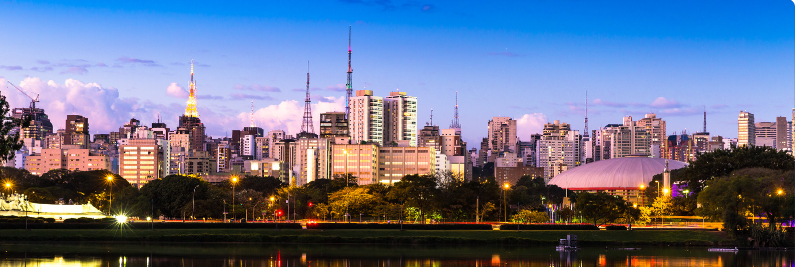
A rebound in domestic investment, along with strengthening private consumption were the key drivers of growth in Q1 2024
Overall, the first-quarter results aligned with FrontierView’s expectations. While 2023’s growth was primarily concentrated in the agricultural sector, the initial figures for 2024 indicate a shift toward more traditional growth dynamics, with domestic consumption as the main driver. A tight labor market, along with government income support policies, such as minimum wage increases and Bolsa Familia adjustments, boosted domestic demand for goods and services.
A slightly stronger-than-expected Q1 result will help offset weaker Q2 growth, anticipated due to the devastating floods in Rio Grande do Sul. In H2, as a result, we maintain our forecast of 1.9% GDP growth for Brazil in 2024. For 2025, we continue to project 2.0% GDP growth, although we see increased downside risks due to prolonged tight financial conditions, including a higher Selic rate throughout 2024 and higher international rates, with the US easing cycle starting later than expected. We also anticipate a reduction in fiscal stimulus next year—negatively impacting domestic consumption—to mitigate rising country risk and accelerated FX depreciation.
Business Implications
While Brazil’s growth output indicates improving economic activity, downside risks persist. Multinatinals in B2C should expect moderating demand as the prices of essential food basket items experience a notable rise in the coming months—due to a combination of domestic supply disruptions and a strong depreciation of the BRL—limiting disposable income. Within the B2B sector, companies should remember that investment recovery will be slow to materialize, with more of the upside shifting toward late 2025–2026, given recent signals by Brazil’s central bank that it will end benchmark interest rate cuts sooner than expected. As a result, the high return on fixed assets will continue to weigh on CAPEX recovery. Finally, both B2C and B2B firms must implement robust risk management strategies to hedge against growing FX volatility, which is expected to persist through H2 2024.
Sector-specific results highlight key growth drivers
After two quarters of stagnant growth, Brazil’s GDP grew by 0.8% QOQ in Q1 2024. This aligns with our expectations and slightly exceeds the market median forecast of 0.7% QOQ. On the supply side, the service sector performed strongly, with a 1.4% QOQ growth. Brazil’s industrial sector saw stagnant growth, with the positive highlight being the manufacturing sector which, after two quarters of zero growth, advanced 0.7% QOQ. Finally, agriculture, despite a year-on-year decline, surged by 11.3% QOQ, indicating a strong close to the year. On the demand side, household consumption and domestic investment were key growth drivers, surging by 1.5% and 4.1%, respectively. Household spending was bolstered by a resilient labor market, real wage gains, and favorable conditions for new loans. A modest recovery to domestic investment was also accompanied by a growth in imports, causing a reduction to net exports relative to previous GDP results.
At FrontierView, our mission is to help our clients grow and win in their most important markets. We are excited to share that FiscalNote, a leading technology provider of global policy and market intelligence has acquired FrontierView. We will continue to cover issues and topics driving growth in your business, while fully leveraging FiscalNote’s portfolio within the global risk, ESG, and geopolitical advisory product suite.
Subscribe to our weekly newsletter The Lens published by our Global Economics and Scenarios team which highlights high-impact developments and trends for business professionals. For full access to our offerings, start your free trial today and download our complimentary mobile app, available on iOS and Android.

